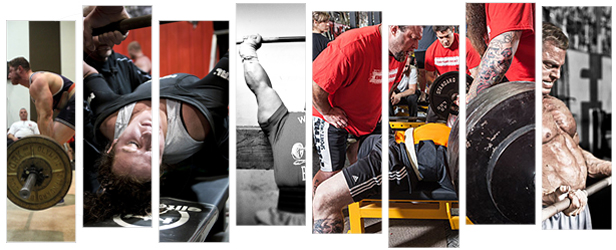
Back in 1995, I attended one of Louie's first seminars at Mark Reifkind’s World Gym in Campbell, California. In my late 30s at the time and well past my elite totals from years before, my USAPL single-ply total had fallen to a meager 1,614 at a body weight of 220 pounds. It was clear that I needed to make adjustments and make them fast if I wanted to compete at the national level as a master lifter. The timing of Louie’s seminar was ideal, and he sold me on the changes I needed to make to my training. Hey, what did I have to lose? After years of using Western periodization, I made a switch to his Westside conjugate training system in 1996.
Over the next three years, I made steady progress using Louie’s system and put 115 pounds on to my USAPL single-ply total at a body weight of 220 pounds and 41 years of age. But during the subsequent three-year period from 2000 to 2002, my gains came to a standstill, as I produced total after total in the low 1,700s. It was frustrating because I had plenty of good training cycles during that time, but my total refused to budge.
In late 2002, I tore my left bicep in training, which forced me to pause and think hard about what I wanted to accomplish as a master lifter and what adjustments I needed to make to be able to train hard and get where I wanted to go. At age 44, my low 1,700s total at a body weight of 220 pounds wasn’t moving. Injuries were starting to creep in, and training wasn't getting any easier. If my conjugate training plan was as dialed in as I thought it was, why was my total stuck in neutral? In hindsight, I was looking—I was just looking in the wrong place.
I remembered something the great Mike Mentzer wrote years ago in his classic book, The Mentzer Method to Fitness. Paraphrasing what Mike said, “If you run a large engine and a small engine at full speed for the same amount of time before turning them off, the larger engine will always take longer to cool down (recover) than the smaller engine due to its greater mass. This dynamic also applies to humans and intense weight training.”
In thinking about my first twenty or so years of continuous training and competing in powerlifting, moving from a body weight of 181 to 198 and then 220 and advancing in age from 22 to 45, I never once varied my weekly training schedule or took a deload week except after a meet. That was when it finally dawned on me. If I had my recovery plan wrong, it didn’t matter if I had my training plan right. I wasn’t going to make progress.
I had put all my focus over the years into optimizing my training plan but little to no focus on my recovery plan. If I wanted to get my total moving again, I knew that I had to get both right going forward. The voice telling me to train hard had been shouting down the voice telling me that I needed more recovery. All I needed to do was listen.
When I resumed training in 2003 following my bicep tear, I decided to make an uncommon change to my recovery plan. While keeping my Westside conjugate training program intact, I started to build my training cycles using eight-day weeks instead of seven-day weeks to add recovery time between training sessions. This change effectively introduced an “every other day” cadence to my training sessions and a 14 percent increase in recovery time each week during my training cycles.
After making the change to an eight-day training week, I started to see and feel improvements. The minor adductor and hamstring tweaks that I had been experiencing off and on over the years gradually went away. The occasional hip soreness that I had been experiencing also subsided. But more importantly, I started to get stronger. By 2005, I had moved my USAPL single-ply total from the low 1,700s at a body weight of 220 pounds and 44 years of age to a PR total of 1,780 at age 46 without any changes to my training program or equipment. In addition, I had taken a step closer to having the right training plan and the right recovery plan.
In 2008, I retired from equipped powerlifting and made a shift to training and competing raw. As part of my transition, I made a switch in 2009 from the Westside conjugate training system to Jim Wendler’s 5/3/1 program for raw powerlifting, and I applied an eight-day training week to my 5/3/1 training cycles with great results as well.
To illustrate, here’s how a 5/3/1 training cycle using a traditional seven-day week compares to a 5/3/1 training cycle using an eight-day week:
Of course, an eight-day week training cycle has its pros and cons.
The pros are:
- Opportunity for improved recovery and performance
- Ease of handling training day conflicts by training one day earlier or one day later
- Increased motivation to train due to the rest day between training days
The benefits of an eight-day week training cycle apply to both geared and raw lifters.
The cons are:
- More complex calendar planning for a training cycle or a meet
- Varied training days from week to week, which can impact training partner participation because most powerlifters use a seven-day week in their training cycles as opposed to an eight-day week
In closing, if you feel like you have a great training plan but are unhappy with your results, take a good look at your recovery plan. You might have your training plan right but your recovery plan wrong. A shift to an eight-day training week might be just the ticket that you need to get off your plateau and on to a bigger total.












1 Comment